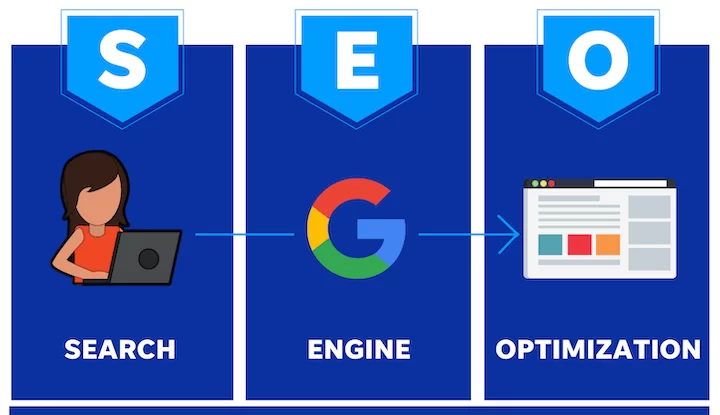
Search engine optimization (SEO) is the process of improving the quality and quantity of website traffic to a website or a web page from search engines. SEO targets unpaid traffic (known as “natural” or “organic” results) rather than direct traffic or paid traffic.
Table of Contents
- Introduction
- Understanding Human SEO Optimization
- Importance of Human SEO in Digital Marketing
- How to Achieve 100% Human SEO Optimization
- 4.1 Keyword Research
- 4.2 High-Quality Content Creation
- 4.3 User Experience and Engagement
- 4.4 Mobile Responsiveness
- 4.5 Speed and Loading Times
- Frequently Asked Questions (FAQs)
- Conclusion
1. Introduction
In the ever-evolving landscape of digital marketing, search engine optimization (SEO) remains a critical aspect of ensuring online success. However, as algorithms become more sophisticated, the focus is shifting towards human SEO optimization. This comprehensive guide will delve into the world of 100% human SEO optimization, explaining its importance and providing actionable tips to enhance your online presence.
2. Understanding Human SEO Optimization
Human SEO optimization, as the name suggests, revolves around catering to the needs and preferences of real people rather than just algorithms. It encompasses various strategies and techniques designed to create a user-friendly, engaging, and informative online experience. This approach not only pleases search engines but also ensures that your content resonates with your target audience.
3. Importance of Human SEO in Digital Marketing
3.1 Enhanced User Experience
One of the key benefits of human SEO optimization is an improved user experience. When your website is user-friendly, visitors are more likely to stay longer, explore more pages, and convert into customers. This positive interaction sends strong signals to search engines that your site is valuable and relevant.
3.2 Higher Engagement and Conversion Rates
Human SEO optimization involves creating content that genuinely addresses the needs and interests of your audience. By doing so, you increase the likelihood of user engagement and conversion. When people find your content valuable, they are more likely to take the desired action, whether it’s making a purchase, signing up for a newsletter, or sharing your content.
3.3 Improved Search Engine Rankings
While traditional SEO techniques still play a role, search engines are becoming better at recognizing and rewarding websites that prioritize user satisfaction. By embracing human SEO optimization, you can improve your chances of ranking higher in search engine results pages (SERPs).
4. How to Achieve 100% Human SEO Optimization
Now that we understand the significance of human SEO, let’s dive into the practical steps you can take to achieve 100% human SEO optimization.
4.1 Keyword Research
Keyword research remains a fundamental aspect of SEO, even in the human-centric approach. Start by identifying relevant keywords and phrases that align with your content. Utilize tools like Google Keyword Planner and SEMrush to discover high-traffic keywords with low competition.
4.2 High-Quality Content Creation
Creating high-quality content is at the core of human SEO optimization. Your content should be informative, engaging, and relevant to your target audience. Incorporate LSI (Latent Semantic Indexing) keywords naturally within your content to improve its context and relevance.
4.3 User Experience and Engagement
Focus on providing an exceptional user experience. Ensure your website is easy to navigate, and the content is well-structured. Use headings (H1-H6 tags) to break up content and make it more scannable. Engage with your audience through comments and social media to foster a sense of community.
4.4 Mobile Responsiveness
With an increasing number of users accessing the internet via mobile devices, it’s crucial to have a mobile-responsive website. Google considers mobile-friendliness when ranking websites, so optimize your site for various screen sizes and devices.
4.5 Speed and Loading Times
Page speed is a critical factor in both user experience and SEO. Ensure your website loads quickly by optimizing images, using efficient coding practices, and leveraging browser caching.
5. Frequently Asked Questions (FAQs)
5.1 What is the ideal keyword density for human SEO optimization?
For human SEO optimization, aim for a keyword density of 1% to 1.5%. This ensures that your content includes keywords naturally without overloading it with them.
5.2 How can I improve user engagement on my website?
To boost user engagement, create interactive content, respond to comments and feedback promptly, and consider implementing chatbots or live chat support.
5.3 Is it essential to update content regularly for human SEO optimization?
Yes, regularly updating your content demonstrates your commitment to providing valuable information. It also keeps your website fresh and relevant in the eyes of both users and search engines.
6. Conclusion
In today’s digital landscape, embracing 100% human SEO optimization is essential for online success. By prioritizing user experience, creating high-quality content, and staying up-to-date with SEO best practices, you can not only improve your search engine rankings but also build a loyal audience. Remember that SEO is an ongoing process, so stay committed to delivering value to your users.
For more information on SEO optimization or to discuss your specific needs, feel free to reach out to me on NewzQuest. I’m here to help you achieve your digital marketing goals. If you found this guide helpful, consider buying me a coffee as a token of appreciation: Buy Me a Coffee.
Thank you for reading, and best of luck with your human SEO optimization journey!
